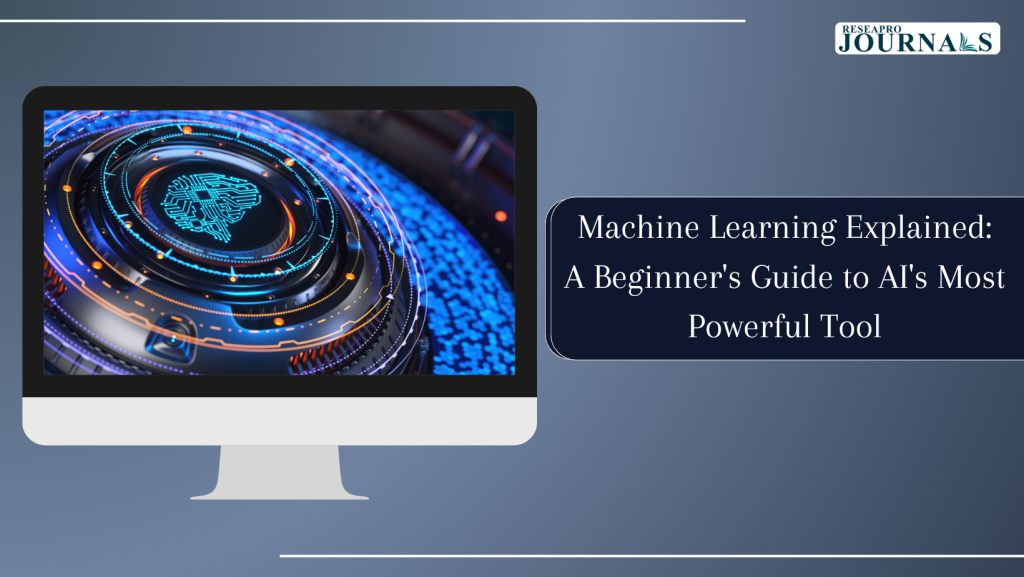
Introduction

In recent years, the hype surrounding machine learning has soared to unprecedented levels, promising to revolutionize industries, transform businesses, and reshape our daily lives. But what exactly is machine learning, and why does it hold such importance?
Why is Machine Learning Important?
Machine learning, a subset of artificial intelligence (AI), empowers computers to learn from data and enhance their performance over time without explicit programming. This ability enables machines to predict, identify patterns, and extract insights from complex datasets, tasks unfeasible for humans to perform manually.
The significance of machine learning lies in its capacity to unlock invaluable insights from vast data sets, fueling innovation, efficiency, and competitiveness across numerous sectors. From personalized streaming recommendations to predictive maintenance in manufacturing, machine learning has become indispensable in our digital era.
Types of Machine Learning
Machine learning comprises three primary types:
• Supervised Learning: This type involves algorithms learning from labeled data, making predictions based on past experiences, commonly used in classification and regression tasks.
• Unsupervised Learning: Algorithms trained on unlabeled data to discern patterns or structures within the data, typical in clustering and dimensionality reduction applications.
• Reinforcement Learning: This trial-and-error approach enables algorithms to learn decision-making through feedback from actions, widely used in gaming, robotics, and autonomous systems.
Choosing and Building the Right Machine Learning Model
Selecting the appropriate machine learning model hinges on various factors, including the problem’s nature, dataset type and size, and the desired outcome. It is crucial to comprehend the strengths and limitations of different algorithms and experiment with multiple models to identify the most suitable one for a specific task.
Building a machine learning model involves several steps, such as data preprocessing, feature selection, model training, evaluation, and optimization. It necessitates a blend of domain expertise, programming skills, and a profound grasp of statistical concepts.
Machine Learning Applications for Academic Scientific Publication
In the academic scientific publication arena, machine learning is revolutionizing data analysis, pattern discovery, and insight generation. From predicting protein structures to identifying potential drug candidates, machine learning algorithms are accelerating scientific discovery’s pace and expanding knowledge boundaries across various fields.
Researchers leverage machine learning techniques to analyze extensive genomics data, forecast disease outcomes, and unearth hidden relationships between genes, proteins, and diseases. Furthermore, machine learning algorithms automate literature search and review processes, enabling researchers to stay abreast of the latest advancements in their respective fields.
Advantages and Disadvantages of Machine Learning
Advantages:
• Automation of Repetitive Tasks: Machine learning excels in automating monotonous tasks, freeing human resources for more strategic endeavors, and enhancing productivity, and efficiency.
• Faster and More Accurate Decision-Making: Machine learning algorithms analyze vast data sets at unparalleled speeds, enabling organizations to make swift and precise data-driven decisions, fostering improved outcomes and competitive advantages.
• Ability to Handle Large and Complex Datasets: Machine learning algorithms adeptly handle large-scale datasets with diverse and unstructured data types, extracting valuable insights and actionable intelligence.
• Adaptability to Changing Environments and Trends: Machine learning models are designed to adapt to new data, enabling organizations to anticipate market shifts, adjust strategies, and maintain competitiveness.
• Potential for Innovation and Discovery: Machine learning unlocks new insights, drives innovation, and catalyzes breakthroughs across various industries by uncovering hidden patterns and relationships within data.
Disadvantages:
• Dependency on High-Quality Data: Machine learning models are only as good as the data they are trained on, requiring high-quality, diverse, and relevant data to ensure accuracy and reliability.
• Interpretability and Explainability Issues: Many machine learning algorithms operate as “black boxes,” lacking transparency and making it challenging to understand their decision-making process.
• Overfitting and Bias in Model Predictions: Machine learning models may overfit training data, leading to poor generalization to unseen data, and inherent biases can result in unfair or discriminatory outcomes.
• Ethical and Privacy Concerns: Machine learning relies on vast amounts of personal data, raising concerns about privacy, consent, and potential misuse or exploitation of sensitive data.
• Need for Continuous Monitoring and Maintenance: Machine learning models require ongoing monitoring and maintenance to ensure optimal performance, adding complexity and cost to deployment.
Importance of Human-Interpretable Machine Learning
In domains such as healthcare and criminal justice, the interpretability of machine learning models is crucial for building trust, ensuring accountability, and making informed decisions based on model predictions. Human-interpretable machine learning models provide explanations for predictions, allowing stakeholders to understand the reasoning behind decisions effectively.
Machine Learning Examples in Various Industries
Machine learning applications span diverse industries:
• Healthcare: Predictive analytics for disease diagnosis, personalized treatment recommendations, and medical image analysis.
• Finance: Fraud detection, credit scoring, algorithmic trading, and risk management.
• Retail: Customer segmentation, demand forecasting, recommendation systems, and supply chain optimization.
• Manufacturing: Predictive maintenance, quality control, supply chain management, and smart production.
• Transportation: Autonomous vehicles, route optimization, traffic prediction, and fleet management.
The Future of Machine Learning
The future of machine learning is brimming with promise, with advancements in areas like deep learning and natural language processing unlocking new opportunities across diverse domains. Machine learning will continue to play a pivotal role in addressing global challenges, driving innovation, and shaping the future of society, empowering individuals and organizations to make smarter decisions and create positive impacts on a global scale.
In conclusion, machine learning represents a transformative force reshaping our world profoundly. Understanding its principles, applications, and implications enables us to harness its potential to drive progress, improve lives, and build a brighter future for generations to come.
